Accommodations vs Modifications
Accommodations vs modifications is an important distinction for all teachers to be aware of when it comes to special education. Let’s start with defining them to get a clearer understanding of the differences they are used in an educational program.
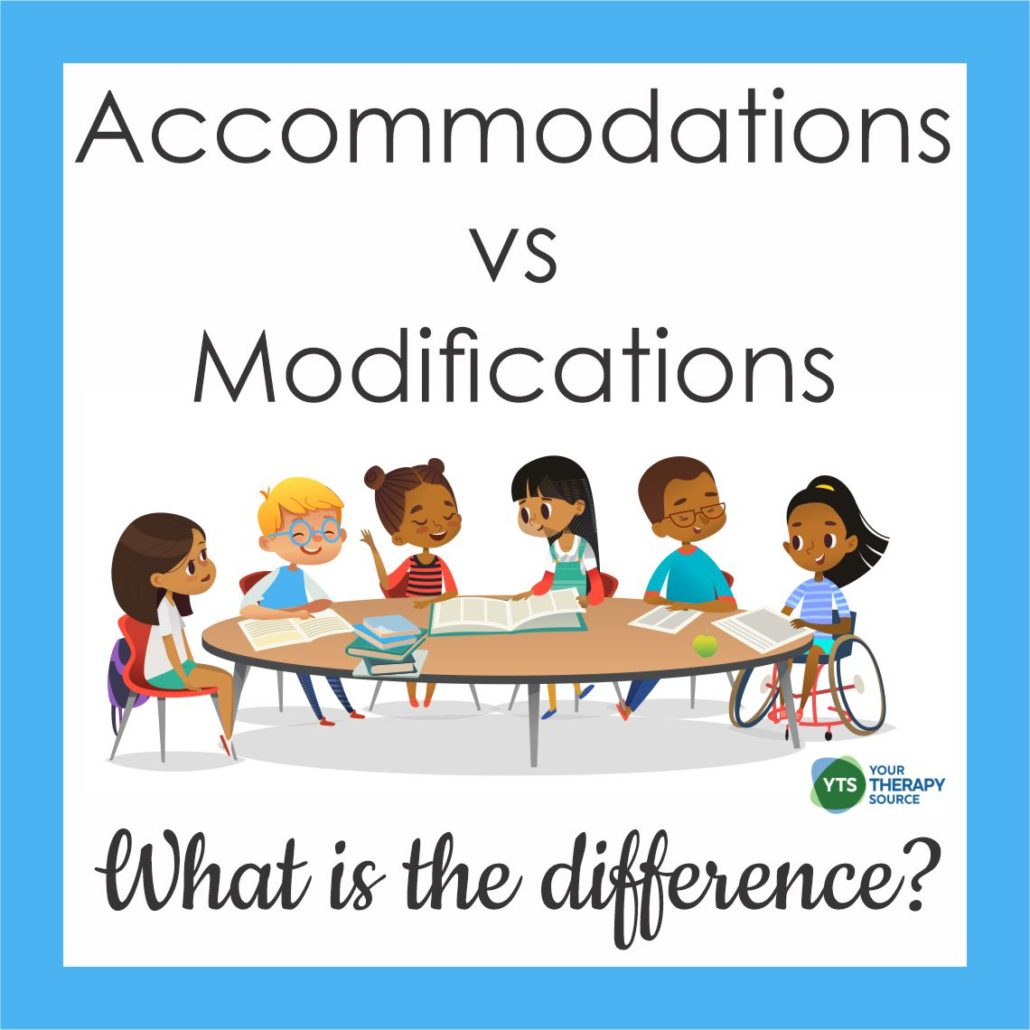
WHAT ARE ACCOMMODATIONS?
An accommodation changes how a student learns the material. There are many different ways this can be accomplished.
There can be many different accommodations for a student. Each student is an individual and school staff must take a close look at what are the best options for that student.
General common examples of accommodations are:
- Presentation accommodations are changing the way information is presented during classroom instruction. Instructors can present information in a different format to meet the needs of the student i.e. auditory versus visual or using a visual schedule to view step by step directions.
- Response accommodations are changing the way a student completes assignments of tests i.e. dictate answers or using assistive technology to respond.
- Setting accommodations are changing where a student completes an assignment or alteration of environment such as special seating or
- Timing accommodations are changing how long of a period of time a student has to complete the assignment or when during the day they complete that assignment.
- Organizational accommodations are allowing a student to use specific resources to complete assignments or tests.
All of the examples above are classroom accommodations but the students may need similar help at home or at a job. It is important that students learn to advocate for themselves because it will be a beneficial life long skill.
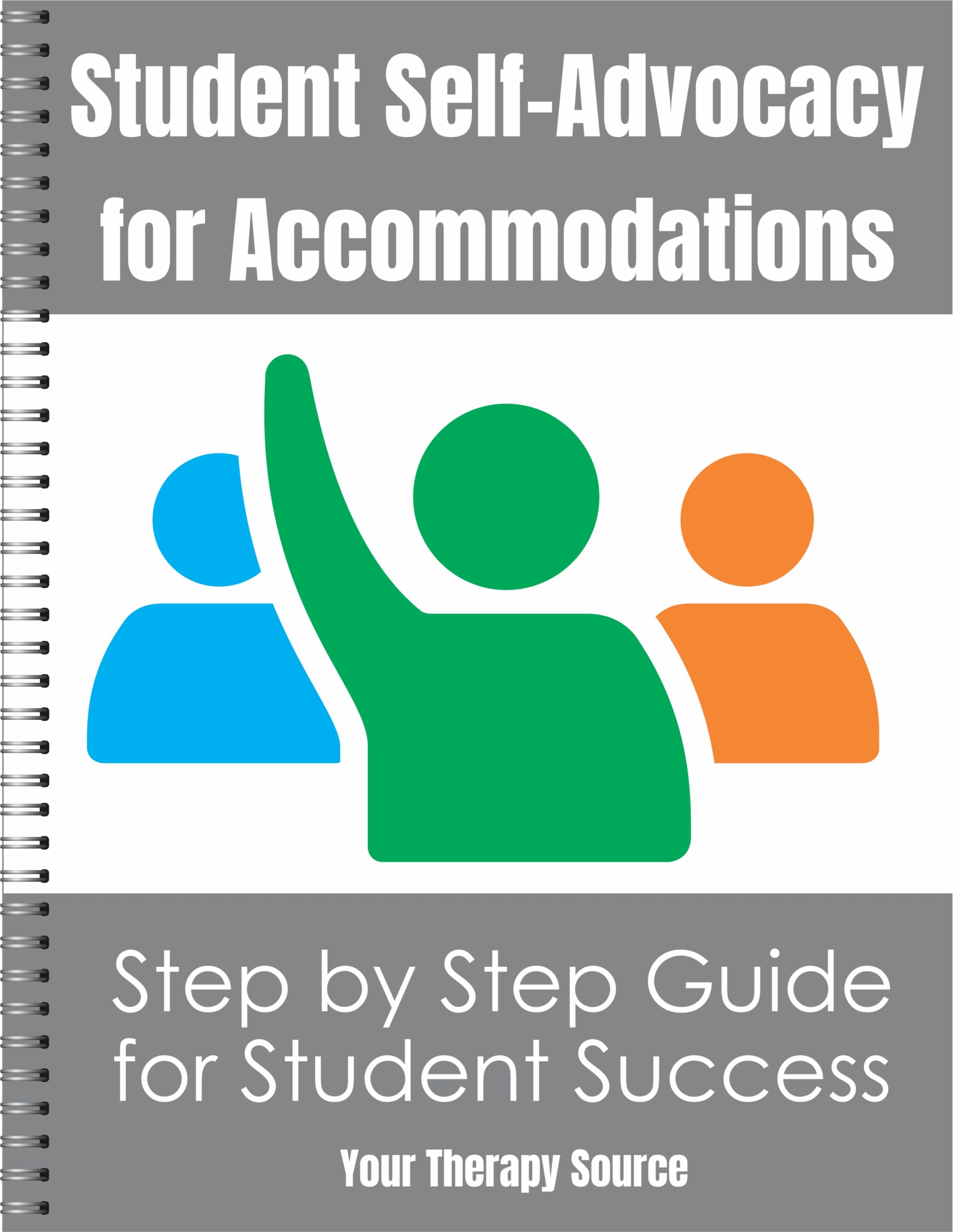
Self-Advocacy for Students
WHAT ARE MODIFICATIONS?
A modification changes what a student is taught or expected to learn.
Assignment modifications are changing what is required for the student to complete the entire assignment to get full credit. Examples of modifications may be allowing a student to revise work after handing it in to get full credit, only answering questions 1 through 10 instead of 1 through 15 or modifying the grading scale. Using an alternate assessment is an example of an assignment modification.
Curriculum modifications are changing the classroom activity or to the curricular material in order to maximize a child’s participation ie. shortening assignments that focus on the main points.
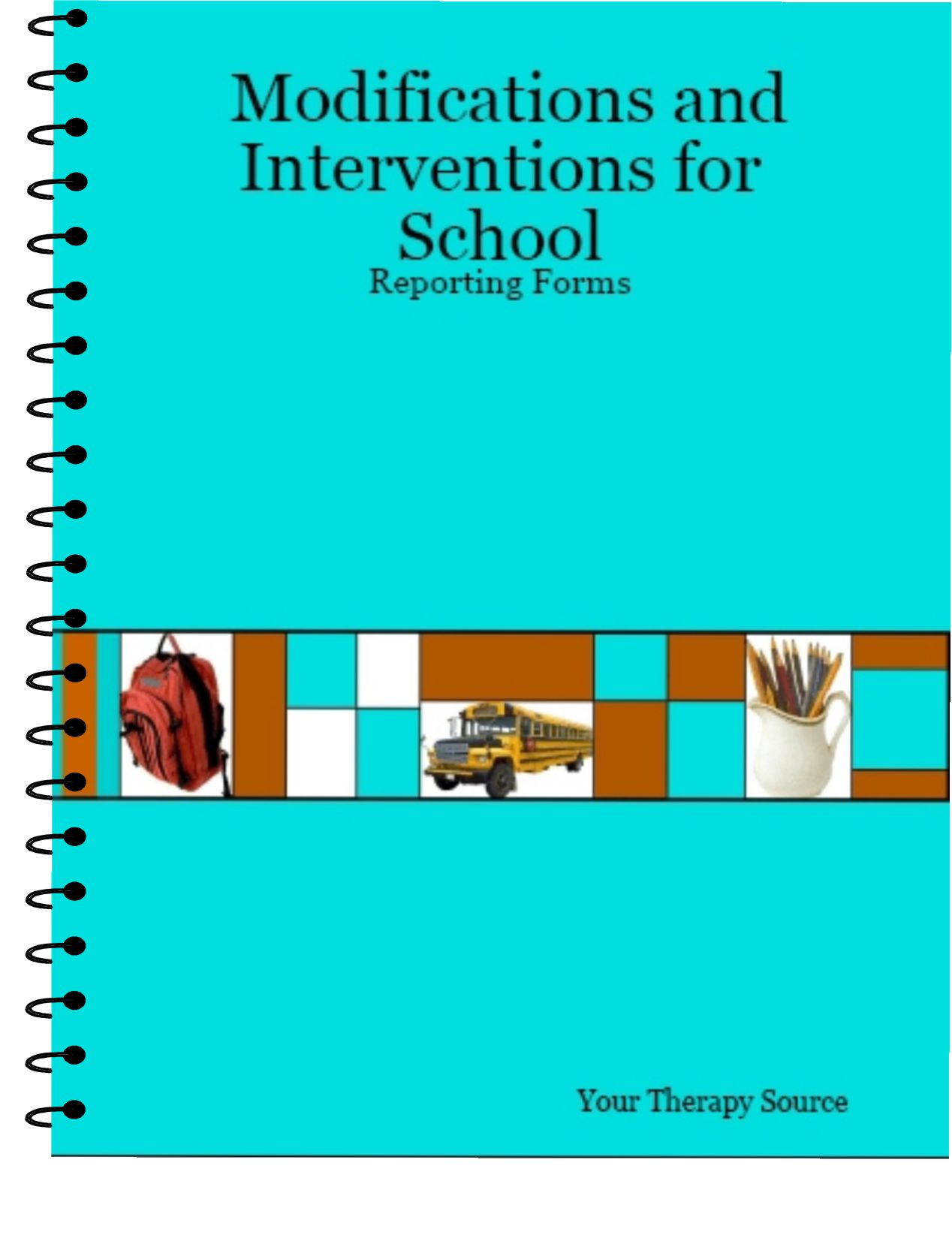
Modifications and Interventions for School Reporting Forms
ACCOMMODATIONS VS MODIFICATIONS EXAMPLES
In simple terms, an accommodation is a change made in the way how a student participates in something or learns new material. For instance, if you wanted to run in a race for 5 laps in gym class but have a bad knee, you might use a leg brace as an example for the use of accommodations during the race.
Modifications involve changing the learning or behavior target towards something more realistic and achievable. For example, if you were running in the same race with a bad knee, they may change the requirements and would run the race for 4 laps. This is considered a modification because they have changed the amount of laps that you are required to run.
Some of the most common accommodations in school might include things like extra time on tests, recording lectures for students who are auditory learners, or preferential seating for students who learn better when they are not around distractions. It can even be as small as providing special note paper or allowing the student to wear sunglasses if it’s too bright in the classroom.
While these accommodations may benefit some students, others may require modifications in order to achieve success. An example of a modification might be allowing a student who fatigues easily to only answer half of the homework questions but still receive full credit. It is extremely important to take the time to determine the appropriate accommodations or modifications for each student.
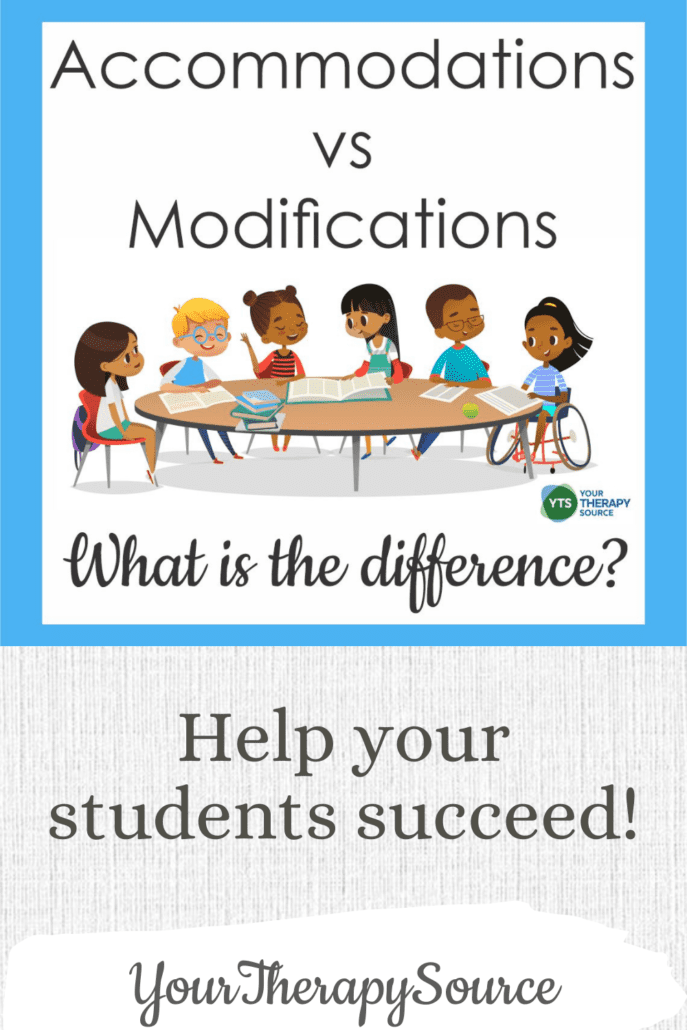
ACCOMMODATIONS VS MODIFICATIONS – HOW DO THEY DIFFER?
Now that we have an idea about how accommodations and modifications are different from each other, let’s look at why teachers need to know this information to help their students access the general curriculum.
Accommodations may make certain tasks more manageable for some students, but others may require modifications instead. It really depends on the needs of a student. Knowing the difference between these two things can allow educators to better meet each student where they are at academically without punishing or shaming them when they are trying to meet the expectations.
ACCOMMODATIONS VS MODIFICATIONS – WHAT IS BEST FOR YOUR STUDENTS?
Accommodations may help some students, but modifications are more likely to give them an opportunity to be successful in receiving meaningful grades and feedback that can lead to mastery of a topic or standard being taught. Below are some common accommodations versus modifications examples:
- A student is expected to write a persuasive essay for English class with an accompanying PowerPoint presentation. The student has trouble staying organized when writing so the teacher offers the option of dictating their essay. This student may need the accommodation of dictating the essay.
- A student is expected to write a persuasive essay for English class with an accompanying PowerPoint presentation. The student stays up all night at home while struggling with a learning disability and no longer has time to complete the PowerPoint portion. This student may need a modification of only requiring the essay.
- A teacher is discussing a novel with his class and the topic is quite dark. A student who struggles with anxiety begins to experience panic attacks in response to stress or loud noises voluntarily leaves the classroom after informing the teacher of what is happening as a result of her disability. This student needed an accommodation of a change in the environment.
- A student completely shuts down during a discussion on a novel due to anxiety issues, resulting in behavioral problems for everyone else. The teacher notices these behaviors and sets up an individual meeting with this student at another time when they can discuss this literature more successfully. This student may need a modification that includes a different book with similar literature concepts.
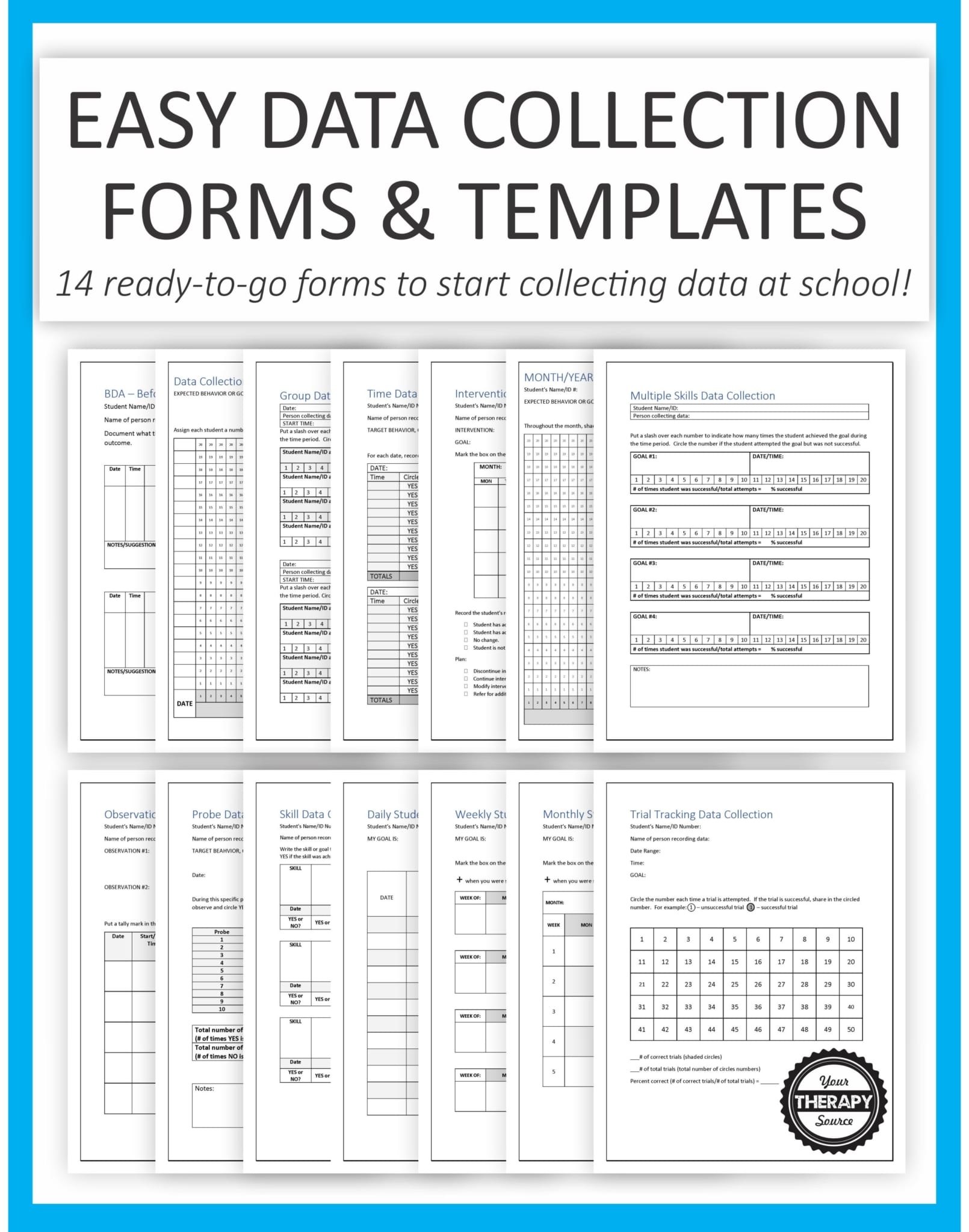
Data Collection for Special Education Templates – EASY
WHERE DO YOU INCLUDE ACCOMMODATIONS AND MODIFICATIONS IN THE INDIVIDUALIZED EDUCATION PROGRAM?
When completing a student’s IEP you will need to include this information. Under Accommodations on the IEP is where the special education teacher will include accommodations or modifications that are needed because of a student’s disability. The decision to provide accommodations and/or modifications should be discussed at the IEP meeting to determine the best options to access the general education curriculum.
WHEN SHOULD YOU USE ACCOMMODATIONS AND WHEN SHOULD YOU USE MODIFICATIONS?
Accommodations OR modifications may be used when students’ disabilities make it difficult to meet an educational standard. Examples would include but are not limited to physical or learning disabilities, mental health impairments (such as anxiety), and other health-related improvements (like needing glasses). Accommodations and/or modifications allow students with these types of disabilities to receive equal access to education without facing consequences due to their disability alone. The Office for Civil Rights states that public schools must provide reasonable accommodations for students with disabilities so long as they do not create an “undue financial and administrative burden”.
The bottom line is that team members need to be aware of the differences between accommodations and modifications because they are not the same. By knowing these differences, you can better help each student meet the learning expectations.
Related Posts
How to Put Classroom Modifications into Action
Extended Time for Tests and ADHD
Accommodations in Special Education – 5 Ways to Help Students Succeed
Dysgraphia Accommodations and Modifications
Accommodations for Students with Emotional and Behavioral Disorders


